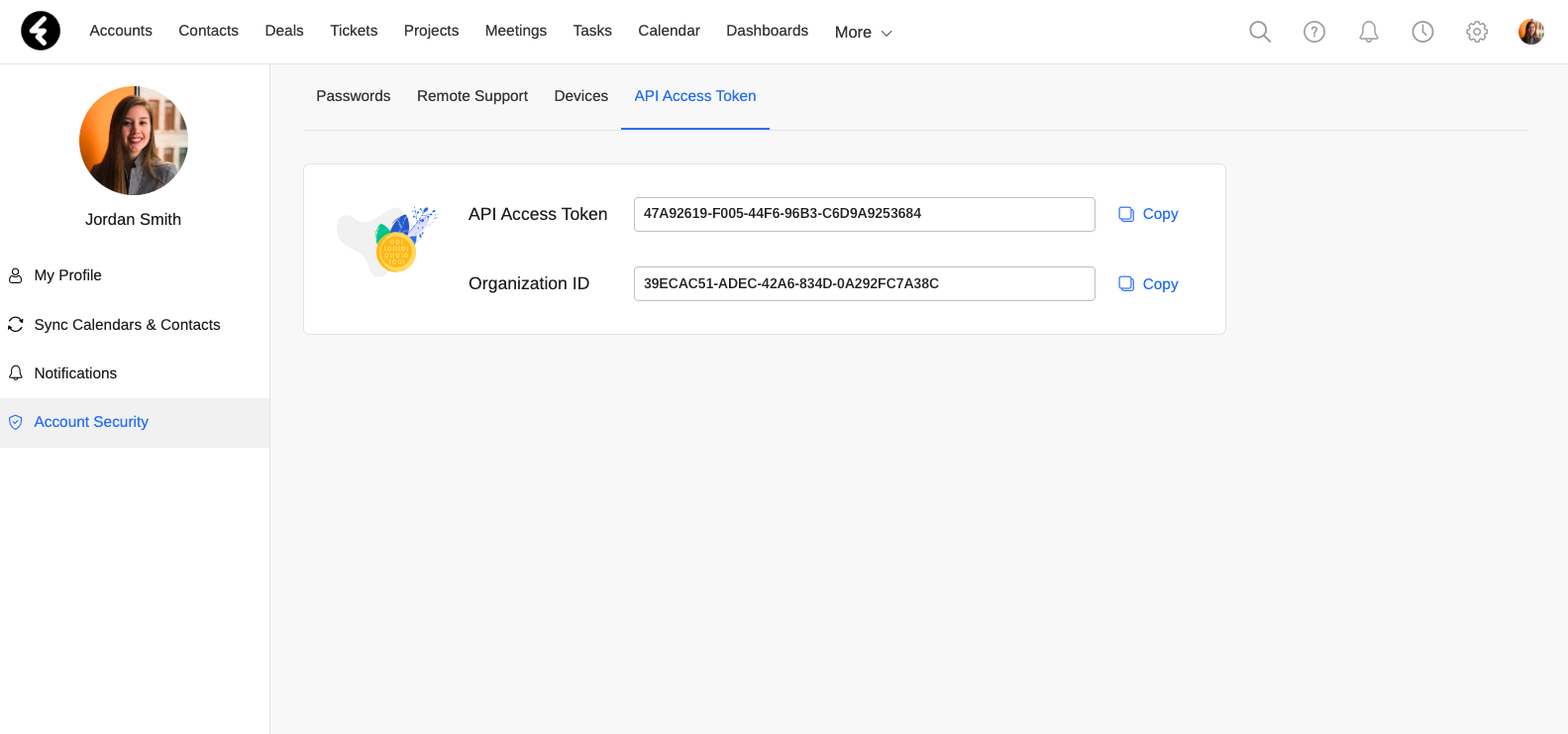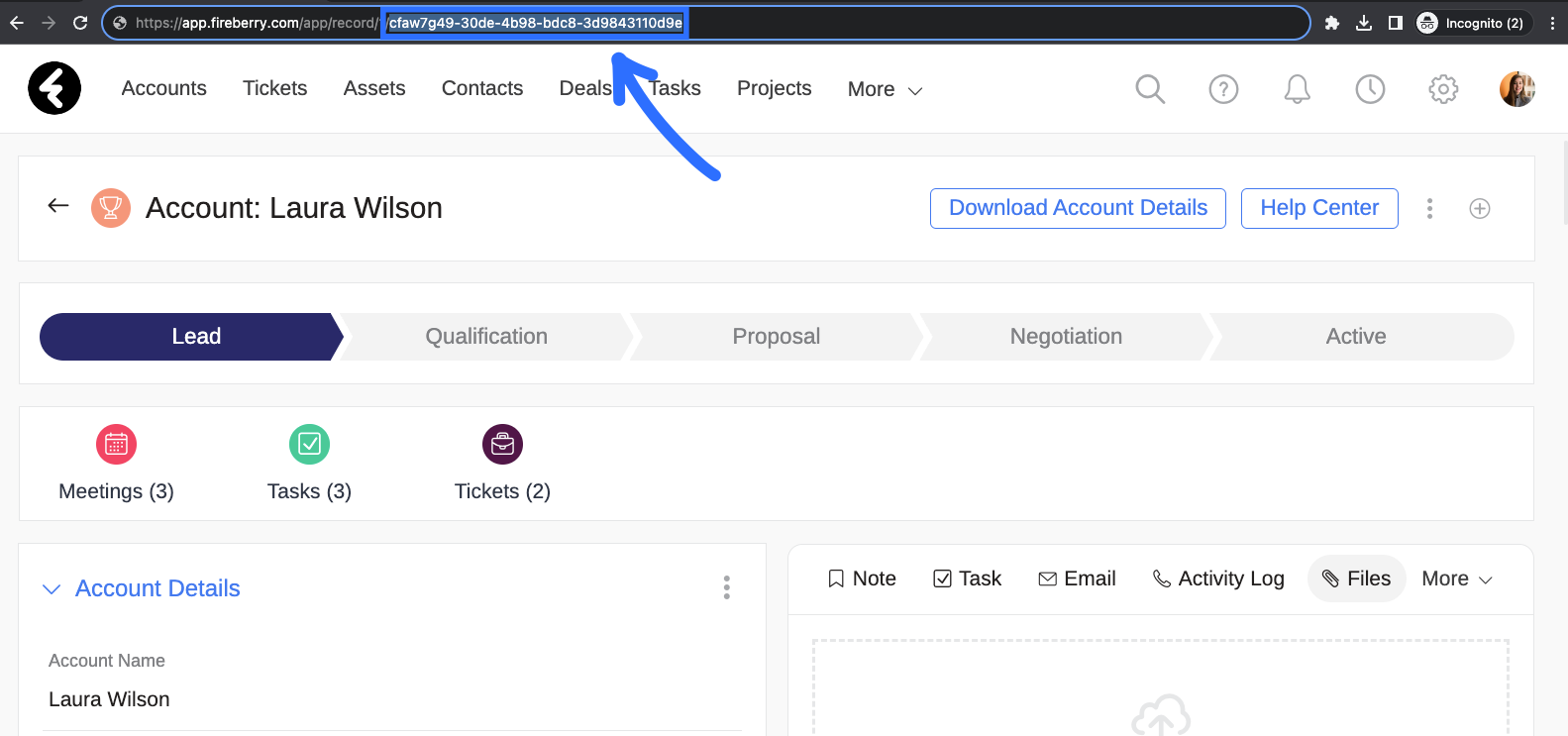Quick Start
If you're new to developing with APIs, this guide is a great starting point. It will teach you how to make a basic Fireberry API request to retrieve your user information.
Setting up an account
To get started, you will need to create a Fireberry account.
If you don't have an existing account, you can sign up for a trial account here.
Getting an API token
Fireberry uses and provides access to API tokens, which are individual tokens for each user.
Please noteEach system user will only have access to their personal access token.
Steps to get a token:
- Log into your Fireberry account.
- Click on the Profile Picture in the top right corner
- Select Profile
- Click the Account Security tab
- Click the API Access Token tab
- Your system API Access Token (TokenID) will be displayed
- Copy the token

Using an API token
Our API endpoint is:
https://api.fireberry.com/api
After getting the token from your Fireberry account, you can begin sending requests through the API. To authorize your requests, you must include the token in the header.
Personal access tokens should be used in a similar manner to OAuth access tokens when accessing the API, by passing them in the Authorization header.
Here's an example:
Send the API token in the "tokenid" header:
"tokenid: APITOKENID"In the above snippet, replace APITOKENID with your API access token.
Accessing a GUID
Globally unique identifiers (GUID) are automatically assigned to each record and object in the system, and are used to uniquely identify them. You’ll use the GUID when you need to access one specific record or object. This is generally in order to update or delete the specified record or object via API.
Please noteEach object is assigned both a GUID and an object number. These are two different things and have different uses. To learn more, click here.
To access a record’s GUID, you’ll use the URL of a record’s system page. First, open the record you’d like to access. Next, go to the URL of the opened page. You’ll find a GUID of the current record. It will be a 36 characters string made up of 32 hexadecimal characters and 4 hyphens. You can now copy the GUID and use it.

To access an object’s GUID, first click the settings gear in the top right of any page. Then select the Object Studio page from the topbar to open a list of all the editable system objects. Next click on any object’s name to open its page. You can now use the URL of this page to find the object’s GUID, in the same method described above for record GUIDs.
Updated 7 months ago
